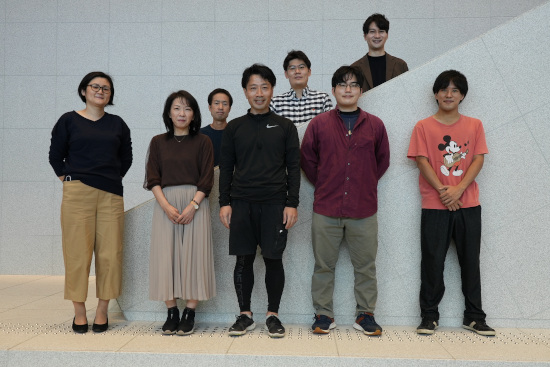Hirofumi Shintaku, RIKEN Hakubi Team Leader

Microfluidics RIKEN Hakubi Research Team, Cluster for Pioneering Research
Could you give us a summary of your research project?
In order to stem the surge of SARS-CoV-2 infections, the early detection and identification of emerging SARS-CoV-2 variants is important. However, at present, our capacity to detect new variants is limited. Utilizing the DNA-tagging technology developed by our laboratory, we decided to develop a pooled strategy that could enable the identification of SARS-CoV-2 variants by analyzing thousands of samples per day.
Why did you decide to do this research?
We hypothesized that our DNA-tagging technology could be useful for identifying new coronavirus variants in a pooled sample. Current approaches for identifying variants require individual sample processing, and this limits the throughput and scalability. Our approach involves labeling RNA molecules with identical DNA tags that enable pooled processing while linking the molecules to the sample identity.
How does your method work?
First, we capture SARS-CoV-2 RNA molecules from a sample with microbeads (~20 µm diameter) coated with identical DNA tags. Second, we pool the microbeads from multiple samples into a single tube and then amplify the DNA derived from the RNA molecules on the surface of the microbeads using polymerase chain reaction (PCR). PCR adds the DNA tags to the DNA amplicons. Third, we enrich the positive beads, showing the amplification of the DNA via fluorescence signal, using a flow cytometer. We then sequence the viral sequence and DNA tags using next-generation sequencing.
What have you learned so far?
We are currently conducting experiments using cellular mRNA rather than virus samples to optimize the PCR reaction on the microbeads. As a result, we were able to create some of the experimental conditions required to perform the PCR reaction.
What challenges remain in your project?
We are planning to conduct proof-of-concept experiments using clinical virus samples. We also plan to further optimize the primer sequence attached to the microbeads to achieve more efficient PCR reactions and readout of the viral genome sequence.

Members of the laboratory
